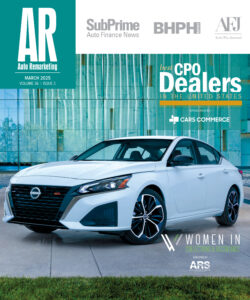CNW: Positive April Gains for Used-Vehicle Leases, Fleet Sales
BANDON, Ore. — CNW Research recently discovered that used-vehicle leases climbed in April, marking the first significant upward movement since July of 2009.
The firm indicated nearly 80,000 used vehicles were leased last month, calculating that figure to be about 3 percent higher than the April total from a year ago. CNW president Art Spinella shared what he believes to be the driving force for the trend reversal. Spinella cited the re-entry of consumers looking for more mainstream models which has resulted in the cap cost falling to under $36,000.
"While that figure is only 2 percent lower than a year ago," Spinella conceded, "it marks the end to a trend that saw cap costs climb to more than $38,000 as lower-income consumers and tight credit left only the best-scoring shoppers able to make a used-lease deal."
Latest on Used-Vehicle Sales
Turning to April used-vehicle sales, CNW projected that based on the first 17 days of the month, the total should be at 4 million units. Analysts noticed private party sales gaining the most ground because of looser credit availability.
"A year ago, it was virtually impossible to get a used loan for a casual sale," Spinella insisted.
CNW thinks franchised dealers will have a slight decline in April — less than 1 percent — versus year-ago used sales performances. The firm made this projection based on declining selections of vehicles as well as many dealers still trying to navigate their way through a change in consumer demand. CNW contends both of these factors are impacting what vehicles dealer decide to keep in inventory.
In regard to independent dealers, the company noted these stores are on track for a year-over-year increase of 2 percent or more in April. Fueling the gain is what they believe to be a somewhat larger inventory of units for independent dealers, especially in the $7,000 to $11,000 range.
When looking at retail prices compared to last April, CNW indicated they're up 6.8 percent for franchised dealers and 10 percent for independents. The firm also noted franchised dealer transaction prices lagged behind the asking-price increase by a modest margin at 5.1 percent. Meanwhile, analysts said independents stores were able to hold onto most of their asking-price increase (9.99 percent).
"On a month-over-month basis, both franchised and independent channels had increases across the board, boding well for profitability," Spinella pointed out.
Strengthening Fleet Market
While CNW detailed significant changes in the used-lease segment, the firm also shared April data about handsome increases in fleet/commercial sales activity.
Thanks to an average per-unit price of $25,804, CNW calculated that the total value of fleet-commercial sales rose more than 36 percent in April to $9.87 billion. The firm indicated large business fleets have upped their purchases by nearly 50 percent compared to April of last year, including both corporate and daily rental vehicles.
Spinella referenced how the increase came earlier than projected. He mentioned surveys conducted midway through last year that revealed large businesses expected to post a relatively flat purchase schedule in 2010. The CNW executive seems to think that modest increases in broad economic activity might have stimulated part of the jump.
"About half of the increase, however, can be traced to existing fleets becoming too old and too expensive to maintain," Spinella asserted.
"Most of these companies elected to retain older vehicles as a means of reigning in costs during the recession," he added.
Spinella shared an example to back up his point. He explained that the average corporate fleet vehicle historically was replaced when mileage hit about 35,000 miles. During the past year, Spinella noted that average mileage has crept up to 60,000 or higher.
Spurring fleet sales aren't just large businesses. CNW contends that figures associated with small businesses are helping this sales segment, too.
The firm calculated almost 40,000 small business fleet purchases this past month. The amount computed into a nearly 160-percent jump from April 2009 when CNW indicated about 15,400 fleet vehicles sales for small businesses were made.
"Small businesses are more reflective of average consumer purchase plans than other fleet-commercial categories," Spinella noted. "But not all small businesses are created equal."
To highlight these distinctions, the firm offered California as an example. CNW said the state has not seen a significant increase in small-business fleet purchases, mentioning data that shows only an 11 percent year-over-year increase.
Spinella insists that change is "anemic at best considering last year's decline versus 2008 was more than 85 percent."
Spinella offered more context about how all fleet sales connect with many parts of the nation's economy.
"Businesses of all sizes are feeling relief — albeit fragile and modest — from the poor economy of 2008-09," he stated. "Survey after survey shows equipment purchase plans that will likely come to fruition in the third and fourth quarter of this year. Currently, the attitude is, ‘If it ain't broke, keep it.'
"The same is true with their fleet vehicles," Spinella continued. "But many are, indeed, broken or simply too expensive to keep. Incentives, a buyers' market and an increased willingness on the part of financial institutions to fund capital expenditures and equipment purchases makes the timing right to begin replacing the ‘stuff' that's almost broke."
Some specific brands that CNW contends could benefit and increase fleet sales activity the most include Ford, Toyota and Nissan.
"Ford was first to admit publicly that it would become increasingly aggressive in the commercial/business fleet market and has seen some dramatic successes with at least one new offering, the Transit Connect," Spinella declared. "Toyota has been slowly increasing its sales to commercial/fleet as have Nissan and most other brands.
"These are profitable units, generating not only cash but sopping up some assembly capacity, bringing the manufacturing cost-per-vehicle down in fairly substantial increments. And from that come increased profits," Spinella added.
Brand, Segment Sales Discussion
On a month-to-month comparison, CNW calculated that new-vehicle sales slipped 7.9 percent from March to April. The firm highlighted some specific brands and segments that did not drop as much as the entire industry.
For example, Ford truck sales were off just 2.1 percent while overall truck sales dropped by 8.4 percent in April. Ford's domestic truck competition from General Motors and Chrysler both fared well, according to CNW, slipping only 3.9 percent.
Only a couple of nameplates posted positive gains in sales for both cars and trucks during April. That group in CNW's data included Volkswagen (up 5.6 percent) and Honda (up 5.0 percent).
Spiking downward most in the firm's sales report are the two nameplates that are being wound down by GM — Saturn and Pontiac. Analysts indicated inventory for these two brands is running out, and sales are virtually non-existent.

 View The Latest Edition
View The Latest Edition

